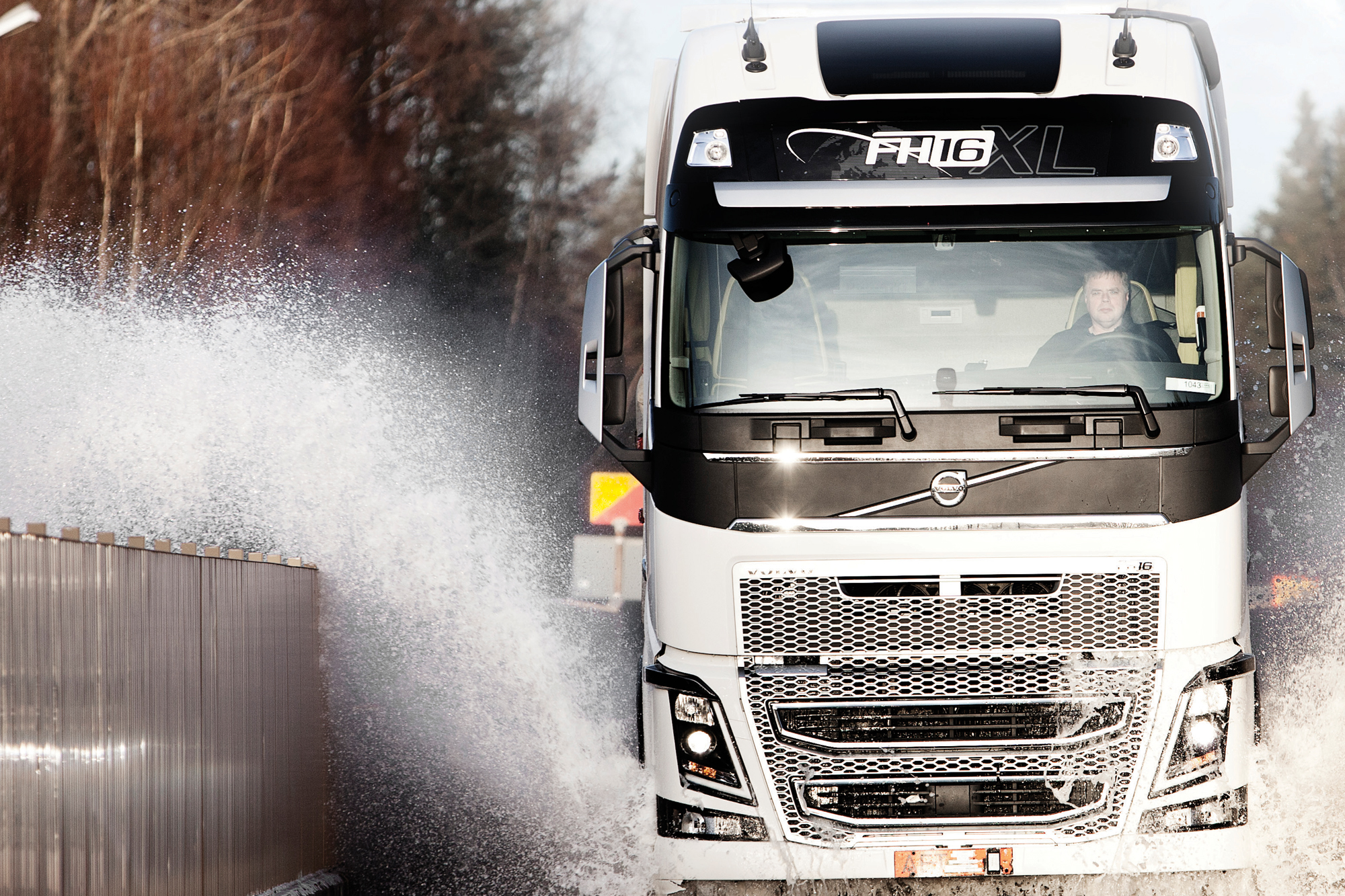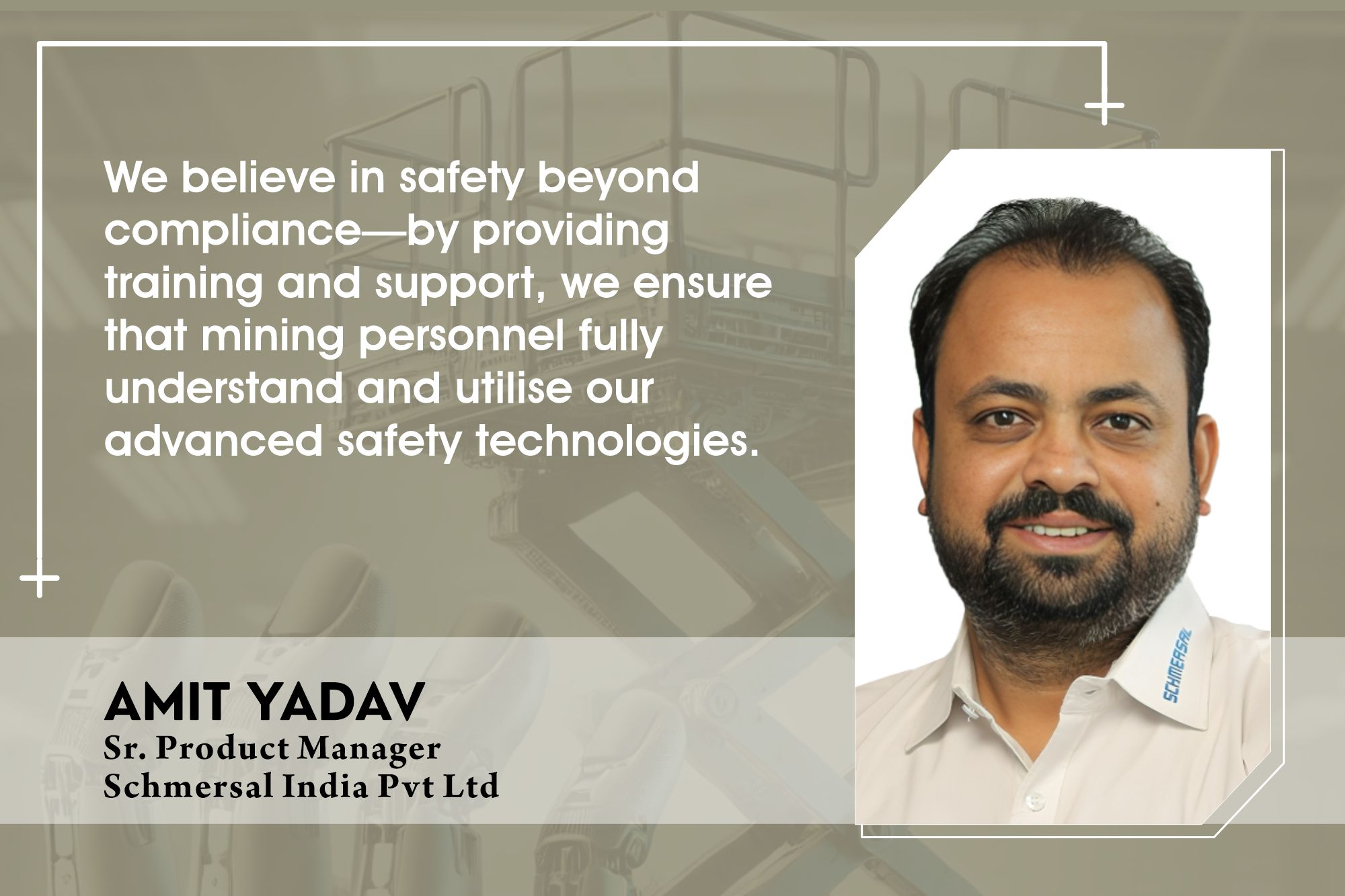Creating the truck of the future
By Edit Team | February 3, 2015 9:42 am SHARE

With a design that slopes slightly forward and a rebellious grille, it is reminiscent of a racehorse at the starting gate, ready to take the world by storm. Which is precisely what it is! We are talking about Volvo Trucks’ next truck generation – the new Volvo FH Series.
19 years. That is how long it is since Volvo Trucks last launched an entirely new truck generation. It was 1993 and the trucks were the Volvo FH12 and FH16. The series was an immediate success and, one year later, it was chosen as the prestigious Truck of the Year. The Volvo FH has been the obvious choice for many truck customers for many years.
It goes without saying that Volvo Trucks has not simply been sitting back, doing nothing, since 1993. It has instead remained at the cutting edge when it comes to product development by continuously improving its trucks. This has included making a number of updates to the Volvo FH Series and developing the driveline; it has become both more powerful and more environmentally sustainable over the years. One of the main challenges when it comes to creating an entirely new truck generation was to make a new truck that was even more unique than the old Volvo FH and took product development to a totally new level.
“We have had a long journey with the current Volvo FH Series, which has been the subject of a number of successful face-lifts and has thereby maintained its competitiveness,” says Claes Nilsson, President Volvo Trucks. He adds, “The only way forward has been to develop something that is even more outstanding. We want to be able to offer our customers the chance to share in the future and the new Volvo FH Series enables us to do precisely that”.
From the beginning, the target was to create the truck of the future, a revolution in the industry, and the journey from the drawing-board to the finished truck has been comprehensive. It is not simply a question of moving from A to B. It has instead been an adventure-filled expedition through a jungle of different parameters, all of which have required detailed attention.
“We started the product planning for the new Volvo FH Series back in 2003. This initially focused on studies of the business environment and analysing future developments in the transport industry, together with future customer requirements and legal standards,” explains Staffan Rödjedal, product manager for the development of the new Volvo FH Series.
He says that the Volvo Group’s core values – environmental care, safety and quality – have naturally inspired the guidelines throughout the project, but that one factor has ultimately played by far the most important role: the customer.
It has been a question of building a truck for the people who are going to use it. The starting point when Volvo Trucks began developing the new Volvo FH Series was to ask customers exactly what they needed and wanted in a truck.
“We can only dream of having the same amount of knowledge drivers have. They are the experts. That’s why it was so important to obtain their input at an early stage in the project. Among other things, drivers tested different entry solutions, mirror designs, storage, beds and mattresses, lighting and driver’s environments. We then took the best concepts, the ones that obtained the highest rankings from our customers, and incorporated them in the new truck,” says Staffan Rödjedal.
Using a functional design solution in which the rearview mirror housing has been removed, freeing up the glass to be fitted on slender arms, visibility – and thereby safety – has been significantly improved.
“Another illustration of function is the way our designers have collaborated with aerodynamic experts to produce a truck which, even if it has a larger cab, generates as little air resistance as possible. This is essential for low fuel consumption,” explains Rikard Orell.
Another design target has been to ensure that the new Volvo FH Series sends a powerful message.
The most important change to the design of the new Volvo FH Series relates to the A pillars. They are now upright, increasing the size of the cab by not less than one cubic metre. This change is yet another illustration of the functional design of the truck, as a larger living area and more storage were clear-cut requests from customers.
During the design process, the customer was also the focal point. To begin with, customers were asked to test wooden models, so-called “mock-ups”, and test vehicles in which different new components had been incorporated in the current Volvo FH Series, after which they also had the chance to test and evaluate finished prototypes.
“We have also conducted a number of field tests with the truck at our customers, in which they have driven the new series in commercial traffic. All the input from them has then been followed up and improvements have been made as the project progressed,” says product manager Staffan Rödjedal.
An enormous test programme has been conducted at the same time. The service life and reliability of the Volvo FH Series have, for example, undergone quality tests in shaking rigs, extreme environments and climates of different types. The new truck series has also undergone safety tests to verify that its structure is reliable. This has included 1,000 simulations, 200 component tests and 50 sleigh tests. The most comprehensive test is known as a full-scale test, which is conducted more than 25 times.
“There is absolutely no question that the drivers have helped to design their new working equipment and home. Many drivers live and sleep in their trucks more than five nights a week, so they know what’s important for them to enjoy work and do a good job. In all, we spoke to almost 900 drivers.”
Volvo Trucks’ design team, with Rikard Orell at the helm, played a key role in this process. Because designing this truck has focused equally on function and aesthetics.
“In the safety tests, we crash a complete truck and test everything, absolutely everything – from the way the exterior, interior and electrical systems are affected to how the crash dummy is protected,” explains Carl Johan Almqvist, Traffic and Product Safety Director Volvo Trucks. “These tests show that, with the new Volvo FH Series, we have reduced both penetration in the cab and the driver’s risk of sustaining knee injuries,” he adds.
It is, however, important to point out that Volvo Trucks has always conducted extremely active safety programmes, even when it has not been involved in launching a totally new truck generation. Since 1969, Volvo has had its own Accident Research Team which investigates accidents that occur in real-life traffic situations. The aim is to evaluate how and why accidents take place, with the aim of reducing them. Carl Johan Almqvist believes that a great deal of progress has now been made.
“Safety has been part of Volvo since day one and it is one of our most important core values. This new truck is totally outstanding when it comes to safety. I often say that it is a driver’s dream. This is what a truck should be like,” says Carl Johan Almqvist.
Two of the most important results from the drivers’ clinics are clearly related to safety and one of the main requests from the drivers has related to the design of the instrument panel. “When you drive, you want all the commands, all the switches and all the levers to be readily accessible. They have to be in front of you, so that you never need to take your eyes off the road. The instrument panel in the new Volvo FH Series has been optimised to match these needs,” explains Carl Johan Almqvist.
The road performance of the vehicle – in other words, the way the driver perceives the truck and the way it handles different situations on the road, such as ruts and corners – is another aspect of safety. The improvements and optimisation relate to the front-wheel suspension, rear-wheel suspension, cab suspension, engine suspension and steering geometry – in fact, everything that could have an impact on road performance. This has been achieved without compromising on Volvo Trucks’ world-leading comfort.
“This is a world first in the truck industry and the new Volvo FH Series is definitely going to make us world leaders,” says Martin Palming, as he describes the road holding offered by the new truck series.
Another key factor for Volvo Trucks has been to develop a fuel-efficient truck. One of the most important new features in is context is I-See, an auto-didactic system that complements the intelligent I-Shift transmission. This system streamlines up- and downhill driving, which can reduce fuel consumption by as much as five per cent.
“You could say that I-Shift has now been given eyes,” says Anders Eriksson, an engineer at Group Trucks Technology, who has been responsible for developing I-See. “The first time a route is driven, I-See registers its topography and, when the truck then covers the same route again, this stored information is used to check the vehicle speed, gear selections and auxiliary brakes. In this way, the energy generated by the truck is used in a more fuel-efficient way,” explains Anders Eriksson.
Lars Mårtensson, head of environmental affairs at Volvo Trucks, thinks that both I-See and a new Volvo FH Series combine to produce a huge step in the right direction.
“Our vision is sustainable transport and we can see that haulage company owners, their customers and society as a whole are also working towards similarly challenging environmental targets. With the new Volvo FH Series, we are on the right track and we shall be able to give our customers a competitive advantage as they strive to realise their own objectives. So it’s good for the environment and good for business,” says Lars Mårtensson.
“This is the true definition of teamwork. We would never have been able to develop the world’s best truck, which I am convinced this is, if we had not had such skilled employees who feel the same burning enthusiasm for their work and for the product,” he says.
Cookie Consent
We use cookies to personalize your experience. By continuing to visit this website you agree to our Terms & Conditions, Privacy Policy and Cookie Policy.





















































